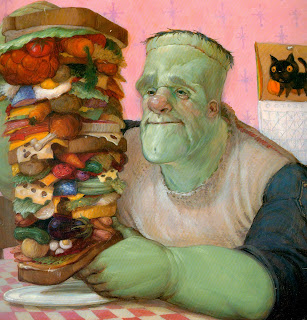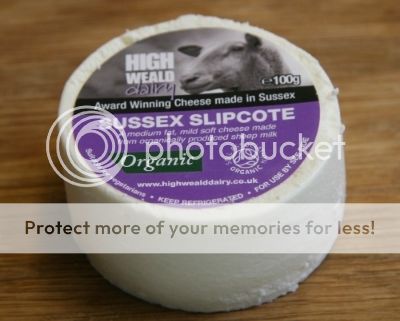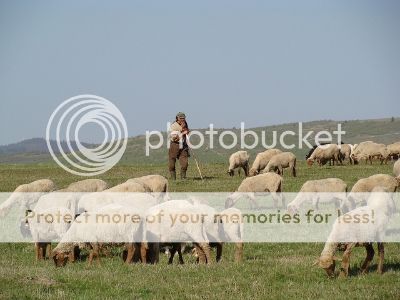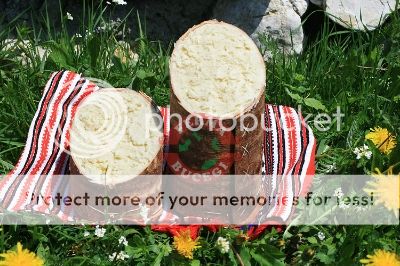Each week, culture intern Katherine will scour great works of literature for all the cheesy details your English teacher never showed you. Authors often include mentions of food and drink in their written works to give the reader a small glimpse into the culture and historic foodways of a particular place and era. This blog series will lend readers a helping hand and shed some light on the cheeses between the lines of the literary greats. Also, each week you’ll have a chance to win a special issue of culturemagazine. Last week’s winner was Russell F.!

Photo by In the Terrific Top 10
Over the years, the ancient festival of All Hallows Eve, better known as Halloween, has received a cult following thanks, in part, to the copious amounts of candy and various pumpkin-spiced edibles served during its celebration. But what if we told you that cheese, yes cheese, was also part of the spooky, scary holiday? What if instead of chocolate bars and candy corn, we all snacked on cheese samples while we went trick-or-treating? What if Boris got it wrong and meant to say “Muenster Mash”? In all the historic Halloween literature, there is never a clear definition of what we should be eating on this festive occasion. There are, however, numerous mentions of cheese in the same famous texts from which we find iconic Halloween monsters like Frankenstein’s Monster, the Invisible Man, and Dracula. With these not-so-scary literary cheeses, I hope to make the case for a slightly more savory Halloween. Leave the garlic and pitchforks at home while we explore the civilized side of cheese eating in the scariest works of classical literature…

The first monster-cheese pairing occurs in Mary Shelley’s iconic novel, Frankenstein, or the Modern Prometheus(1818). Set in early nineteenth-century Switzerland, a slightly-crazed doctor named Victor Frankenstein begins experimenting with the novel concept of galvanism (using electricity to animate or reanimate animal tissue). From his supernatural experiments comes the monster we all know and incorrectly call Frankenstein. Fast forwarding a bit, we find that Frank the monster has escaped from the doctor’s laboratory in Geneva and fled to the nearby foothills of the picturesque Swiss Alps. Fatigued and hungry, Frank decided to approach an open shepherd’s hut to seek assistance,
“It was about seven in the morning, and I longed to obtain food and shelter; at length I perceived a small hut, on a rising ground, which had doubtless been built for the convenience of some shepherd. This was a new sight to me; and I examined the structure; with great curiosity. Finding the door open, I entered. An old man sat in it, near a fire, over which he was preparing his breakfast. He turned on hearing a noise; and perceiving me, shrieked loudly, and quitting the hut, ran across the fields with a speed of which his debilitated form hardly appeared capable. I greedily devoured the remnants of the shepherd’s breakfast, which consisted of bread, cheese, milk, and wine; the latter, however, I did not like.”
As we can see, Frank was a simple monster who found the country life quite amenable. While Shelley doesn’t explicitly state the type of cheese Frank enjoyed, we can assume it was a local cheese that the Shepherd most likely made himself. After Frank awakes from his post-breakfast nap, he decides to go on a walk through the nearby village where he found more huts and cottages with “vegetables in the gardens” and “milk and cheese…placed at the windows.”

Photo by My Switzerland
Using the wintertime weather to their advantage, locals probably stored the milk and cheese on the windowsills to keep the dairy cool. With these details, along with the earlier mention of the shepherd, we can deduce that this nearby village might just be a dairying community, one that participates in traditional yearly Alpine cheese making customs. For hundreds of years, Swiss shepherds have herded their flocks – typically sheep or cows – up the Swiss Alps to graze in the highest meadows. From the beginning of summer until the end of fall, the animals graze and produce their best milk, while their caretakers produce various traditional Swiss cheeses. Once they return to the villages, they divide the cheese between the villagers and those who participated in the cheese-making process. The cheeses Frank sees throughout this village could be the remnants of the traditional alpine cheese season. If only he could stop scaring the villagers long enough to learn their cheesemaking secrets.

Photo by Geek Legacy
The next scary cheese comes from the horror / science-fiction novel penned by H.G. Wells, The Invisible Man(1897). While the Invisible Man doesn’t really fall within the traditional category of Halloween monsters, his devious actions at the end of the story prove his monstrous capabilities. What started as an experiment in optics (do you see a trend here?) resulted in a nasty case of indeterminable invisibility. He conceals his form, or lack thereof, with bandages, a fake nose, a large coat, and thick gloves. Hoping to reverse the effects, the foolish scientist, also known as Griffin, sets off to find a cure and finds himself stuck in the quaint village of Iping in West Sussex, England during a snowstorm. He sets up a makeshift chemistry lab in his rented room at the local inn and earns the scorn of the lady innkeeper who thinks him odd and reclusive. During an argument, he accidentally reveals his invisibility to the innkeeper who immediately calls the police. As he flees the premises he removes his bandages, becoming completely invisible, save for the remnants of his undigested dinner sitting in his stomach. The Invisible Man runs into his only trusted friend in town who can’t help but notice the cheese…
“I’m dashed!” he said. “If this don’t beat cock-fighting! Most remarkable!—And there I can see a rabbit clean through you, ‘arf a mile away! Not a bit of you visible—except—” He scrutinized the apparently empty space keenly. “You ‘aven’t been eatin’ bread and cheese?” he asked, holding the invisible arm. “You’re quite right, and it’s not quite assimilated into the system.” “Ah!” said Mr. Marvel. “Sort of ghostly, though.”

Photo by High Weald Dairy
Without much detail, it is difficult to figure out which type of cheese is visible through the Invisible Man’s stomach, but thanks to the longstanding tradition of regional British cheeses we can hypothesize that he ate a local variety from the county of West Sussex. One of the oldest varieties produced in that area is known as Sussex Slipcote. A soft, fresh sheep’s milk cheese made since medieval times, the word “slipcote” is an Old English compound word that means “a little piece of cottage cheese.” Although the curse of invisibility rendered him insane and unstable, we now know that the Invisible Man can be felled with just a few embarrassing jibes. If you ever run across him try “your slipcote is showing” and see what happens.

Photo by Drawing Sketches
The final cheesy mention exists in Bram Stoker’s famous gothic novel, Dracula (1897). While Stoker was from Ireland and had never visited the haunted woods of Transylvania, he became close friends with a Hungarian writer and traveler who shared the spooky stories associated with Dracula’s home and the historic Carpathian Mountains. At the time of publication, Transylvanian culture was heavily influenced by Turkish traditions, but the nation learned from numerous cultures throughout its ancient history including the Romans, several Eastern European nations, and the Ottoman Empire. In turn, this cultural melting pot contributed to the local Transylvanian cuisine, which boasts various national foods and over ten different common cheeses. For a novel about a blood-sucking vampire, Stoker included a surprising amount of culinary detail. For example, the first time we meet Dracula he serves a rich, but simple dinner to his guest, Jonathon Harker,
”The Count himself came forward and took off the cover of a dish, and I fell to at once on an excellent roast chicken. This, with some cheese and a salad and a bottle of old Tokay, of which I had two glasses, was my supper. During the time I was eating it the Count asked me many questions as to my journey, and I told him by degrees all I had experienced.”
Dracula’s castle is situated in the depths of the Carpathian Mountains in Transylvania (what is modern day Romania). One of the lasting traditions of Romanian cheesemaking is the use of transhumance. Although this sounds like some sort of spell Dracula might use on unsuspecting dinner guests, transhumance can be defined as the action or practice of moving livestock – typically sheep or cattle – from one grazing ground to another in a seasonal cycle. This is usually occurs in a mountainous area where the livestock can graze both in the lowlands and in the highlands, which allows the grazed areas to regrow and creates particularly high-quality milk.

Photo by Wild Transylvania
In Romania, the general word for cheese is brânză. There are two common varieties of cheese particular to the historic Transylvanian region including brânză de burduf and brânză de coşulet. They share similar characteristics – salty, sheep’s milk, soft texture, strong flavors – and are similarly stored in tubes made of pine bark or fir tree bark, which helps create additional flavor. How bad could Drac be if he has such good taste in cheese?

Photo by Ferma Bucegi
Clearly, it is time to put away the candy and serve more appropriate fare at our Halloween gatherings. All these misunderstood monsters wanted was to share with you a bit of their respective cheese-filled cultures. After all, what is scarier than realizing your well-crafted cheese plate is completely gone!?




